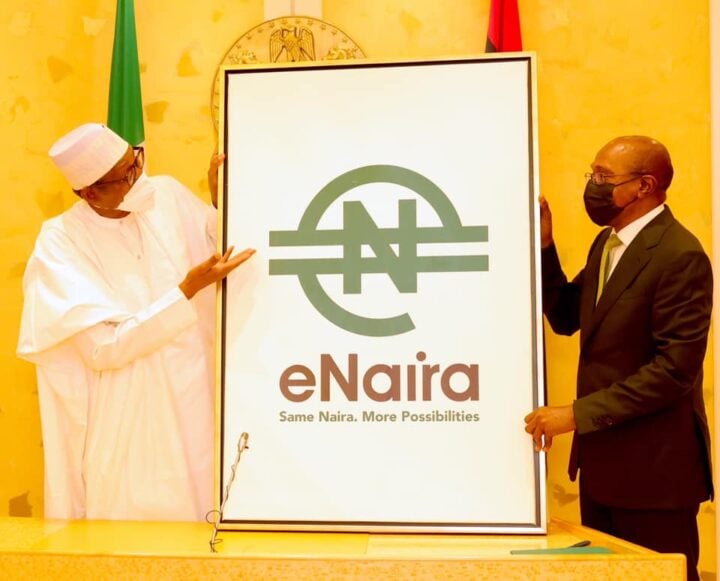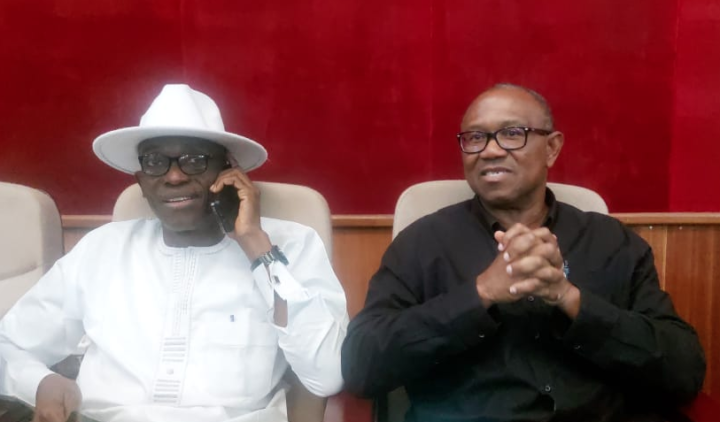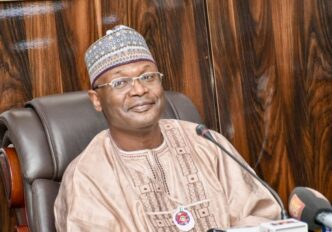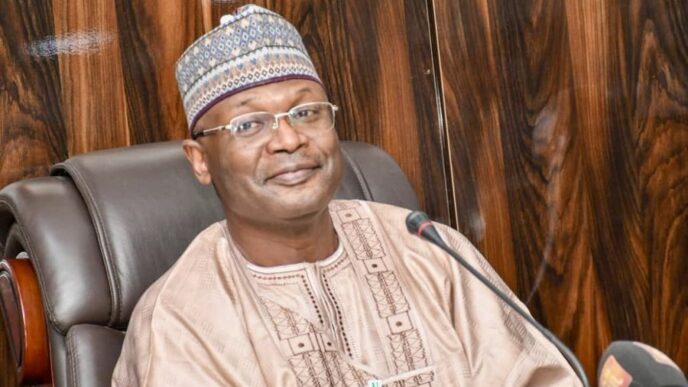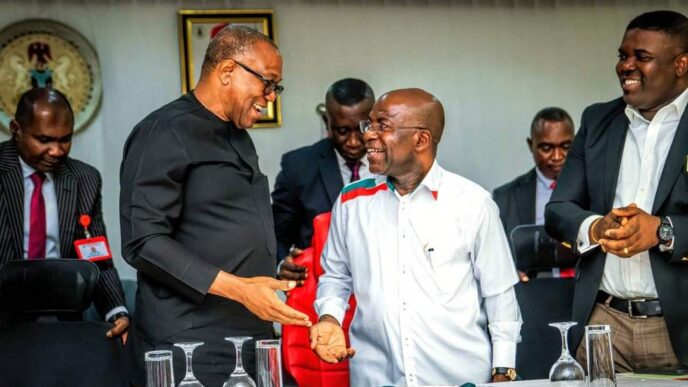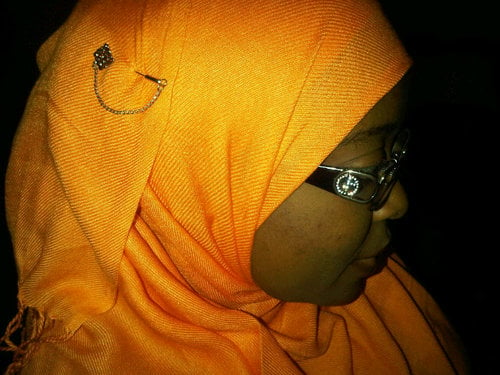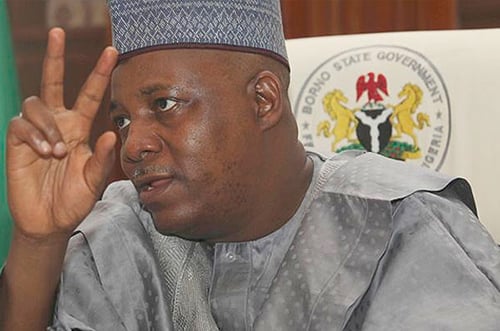Former President Muhammadu Buhari and Godwin Emefiele, former CBN governor, during the launch of eNaira
Three years on… is Nigeria’s eNaira fading into irrelevance?
Across the world, central banks are racing to develop digital currencies as part of efforts to modernise financial systems, enhance payment efficiency, and drive financial inclusion.
Countries like the Bahamas, Nigeria, and Jamaica have successfully launched their own Central Bank Digital Currencies (CBDCs) with varying degrees of adoption.
According to the Atlantic Council, a US-based think tank, a CBDC is virtual money backed and issued by a central bank.
Advertisement
Data from the council shows that 134 countries and currency unions, representing 98% of global GDP, are exploring a CBDC. In May 2020, that number was only 35. Currently, 66 countries are in the advanced exploration phase — development, pilot, or launch.
NIGERIA’S eNAIRA, A PIONEER IN AFRICA
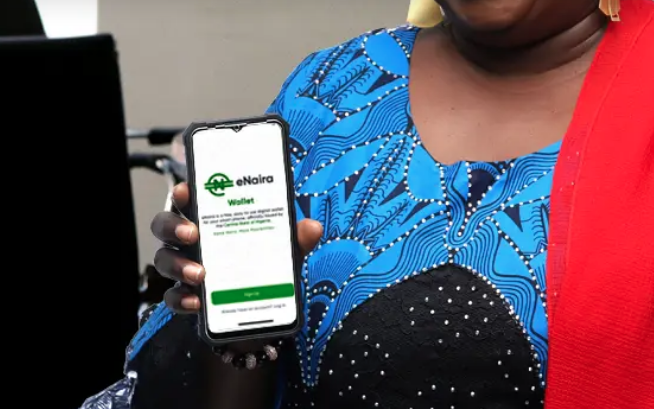
In Africa, Nigeria took the lead in October 2021 by launching the eNaira, becoming the first country on the continent to introduce a digital currency backed by its central bank. The eNaira is the digital equivalent of the naira, Nigeria’s currency.
Unveiled by former President Muhammadu Buhari, the primary aim of the digital currency was to promote financial inclusion by integrating unbanked populations into the financial system.
Advertisement
Other benefits of the eNaira outlined by the CBN include reducing the cost of printing currency, providing a fast, cheap, reliable, and available payment channel, supporting the digital economy, simplifying cross-border payments and trade, improving economic activities, enhancing the effectiveness of monetary policies, facilitating targeted social interventions for Nigerians, and streamlining tax remittance and collection to support the country’s growth.
The CBN introduced eNaira as part of its strategy to curb the use of cryptocurrencies, which were considered volatile and anonymous. Unlike cryptocurrencies, the eNaira operates under a centralised and controlled system, allowing the CBN to monitor transactions, limit access to wallets, and regulate the purchasing power of eNaira holders.
ADOPTION AND PUBLIC PERCEPTION

About a month after its launch, the eNaira recorded 589,000 downloads across iOS and Android app stores, averaging 20,000 downloads per day. By January 2022, the CBN announced that the app had been downloaded over 694,000 times and had processed over 35,000 transactions. Later in 2022, the CBN reported that the platform had processed transactions worth just under $10 million.
Advertisement
However, by July 2023, an International Monetary Fund (IMF) report revealed that only 0.5% of Nigerians had adopted the eNaira, with 98.5% of wallets remaining inactive a year after its launch. More than three years later, adoption remains low.
The public perception of the eNaira has been largely negative, characterised by skepticism and low usage. The IMF described the public adoption of the eNaira as “disappointingly low”. On social media, many users mocked the initiative, using terms like “E-vanish,” “E-vaporate,” and “E-Dead” to describe it as a failure.
TheCable observed that the speed wallet application (eNaira mobile app), rolled out by the CBN, has been removed from the Google Play Store, though it remains accessible on the Apple Store. Additionally, the USSD code (*997#), designed to enable transactions for users without smartphones, is non-functional. The last post across all official eNaira social media handles was on August 10, 2023.
An IMF Article IV consultation report released in May 2024 stated that the number of eNaira wallets had reached 13 million, with most remaining inactive. The report stated that since the launch, the total volume of executed transactions has reached 854,512, mostly consumer-to-merchant transactions, amounting to N29.3 billion.
Advertisement
CHALLENGES

The IMF attributed the slow adoption of the eNaira to the CBN’s “phased approach”, which initially restricted the digital currency to bank account holders and domestic transactions.
Advertisement
Mayowa Tijani, a development journalist, downloaded the eNaira app and funded his wallet shortly after its launch. He noted that aside from waiving transaction fees at the start, the CBN failed to communicate the unique benefits of using the eNaira compared to regular banking apps.
“I just did not see any use that was beyond what the normal naira or bank apps would do,” he said.
Advertisement
“I feel like it was just following the craze of CBDCs because a number of countries in the world were discussing the possibility of CBDCs. So, the central bank just felt like it was a good idea to do the same. We did not deploy it really well in a way that it was going to be useful for anybody within the country.
“So, for me, now having it and wanting to use it, I was looking for people who had the same eNaira wallet. Of course, since the adoption was not great, a lot of people did not have it. At the end of the day, I couldn’t use it. I still had to do transfers from my bank. That’s probably why it died a natural death.”
Advertisement
Solomon Amunde, a blockchain and crypto expert, also pointed to the unclear value proposition and limited use cases as factors stifling the adoption of the eNaira.
“I would say one of the major problems here, why it hasn’t gotten that wide adoption, is because it’s not being communicated properly, and it’s not being put in front of everyone,” he said.
“So, even if it’s useful, people don’t know that. Even if it promises lower transaction costs, people haven’t been able to see that yet.
“Ideally, eNaira should function like stablecoins such as USDT or USDC, facilitating instant transactions and financial inclusion. But if people can’t easily integrate it into their daily transactions, what’s the incentive to switch?”
RECOMMENDATIONS AND THE FUTURE OF eNAIRA
To boost adoption, Amunde suggested that the federal government mandate the use of the eNaira for National Youth Service Corps (NYSC) members, civil servants, and government payments.
“Corp members should be paid through the eNaira. All government payments will be made via the eNaira. Civil servants should be mandated (give them two weeks or a month to submit their eNaira wallet details), and that’s the means through which they’ll be paid,” he said.
“Also, platforms that they have some form of control over, let’s say, if you want to pay for a driver’s license or an international passport, should include the eNaira as a payment option.”
As part of efforts to drive adoption, in March 2024, the CBN signed an MoU with Gluwa, a blockchain firm, to enhance eNaira’s technical functionalities and boost financial inclusion. In September 2024, the apex bank also announced plans to expand the use of the eNaira for payments into government accounts and allow ministries, departments, and agencies (MDAs) to initiate vendor and beneficiary payments.
Whether these measures will significantly improve adoption remains to be seen. However, for the eNaira to succeed, experts suggest that the CBN must clearly define its value proposition, improve accessibility, and foster trust among Nigerians.
